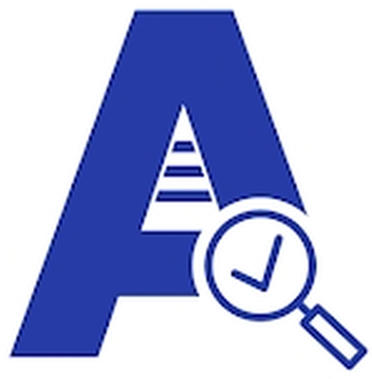Food Inventory Checklist
Food inventory checklist inspections helps ensure a structured, thorough, and efficient process, improving accuracy and streamlining documentation.

General Inventory Management
- Organization:
- Confirm that all food items are organized systematically.
- Ensure items are stored off the floor, away from walls, and on appropriate shelving.
- Regularly update and maintain the organization of storage areas.
- Labeling and Dating:
- Label all food items with the date of receipt and expiration.
- Use clear, legible labels that are easy to read.
- Follow the FIFO (First In, First Out) method for inventory rotation.
- Inventory Counting:
- Schedule regular inventory counts (daily, weekly, or monthly as needed).
- Compare recorded counts to expected counts and investigate discrepancies.
- Ensure that inventory counts are accurate and up-to-date.
- Inventory Updates:
- Update the inventory list in real-time as items are received, used, or disposed of.
- Ensure the inventory list reflects current stock levels accurately.
- Review and adjust inventory levels as needed.
Receiving Inventory
- Quality Check:
- Inspect all incoming items for quality and condition.
- Check for damage, spoilage, and expiration dates.
- Reject items that do not meet quality standards.
- Documentation:
- Record details of each delivery, including date, supplier, and quantities.
- Ensure delivery documents are accurate and complete.
- Store delivery records for future reference.
- Storage:
- Store items immediately in the appropriate location.
- Ensure proper storage conditions (temperature, humidity, etc.).
- Verify that items are stored according to food safety standards.
Stock Rotation
- FIFO System:
- Implement and maintain a FIFO system.
- Regularly check that older stock is used before newer stock.
- Ensure no expired items remain in storage.
- Expiration Tracking:
- Monitor expiration dates closely.
- Set alerts for approaching expiration dates.
- Rotate stock to use items before they expire.
Waste Management
- Tracking Waste:
- Record all discarded items and reasons for disposal.
- Analyze waste patterns to identify areas for improvement.
- Implement strategies to reduce waste.
- Minimizing Waste:
- Adjust ordering quantities based on usage patterns.
- Use proper storage practices to extend the shelf life of products.
- Regularly review and adjust waste reduction strategies.
Reporting and Analysis
- Inventory Reports:
- Generate regular inventory reports.
- Review reports for accuracy and completeness.
- Use reports to inform ordering and stock management decisions.
- Usage Analysis:
- Analyze usage patterns to optimize stock levels.
- Adjust inventory levels based on usage data.
- Ensure optimal stock levels to avoid overstocking or shortages.
- Cost Control:
- Monitor inventory costs and compare to budget.
- Track cost data to identify any areas where costs exceed budget.
- Implement cost-saving measures as needed.
Compliance and Safety
- Temperature Monitoring:
- Regularly monitor and log temperatures of storage units.
- Ensure storage units are within safe temperature ranges.
- Set alerts for deviations in temperature.
- Pest Control:
- Conduct regular inspections for signs of pests.
- Maintain a clean storage area and use pest control measures as needed.
- Record and address any pest control issues promptly.
- Health and Safety Compliance:
- Ensure all inventory practices comply with local health and safety regulations.
- Regularly review and update practices as needed.
- Keep detailed records of compliance checks and updates.
Employee Training
- Training Records:
- Track employee training on inventory management and food safety.
- Ensure all employees are up-to-date with training requirements.
- Provide ongoing training and updates as needed.
- Ongoing Education:
- Offer continuous training and refresher courses for staff.
- Encourage employees to stay informed about best practices and new procedures.
- Monitor progress and completion of training modules.

Preparation Tips
- Regular Audits:
- Conduct regular self-audits to identify and address potential issues before inspections.
- Use a checklist to ensure all aspects of food storage are covered.
- Schedule automated reminders for audit tasks.
- Stay Informed:
- Keep up-to-date with local health regulations and industry best practices.
- Implement changes as needed to ensure compliance.
- Use available resources to stay informed about food safety standards.
- Effective Communication:
- Clearly communicate the importance of proper inventory management to all staff.
- Maintain open lines of communication for reporting issues and receiving feedback.
- Encourage staff to report any inventory-related concerns immediately.
Food Inventory Checklist Using eAuditor Audits & Inspections

Performing a food inventory checklist inspection using eAuditor Audits & Inspections involves a structured approach to ensure accuracy and efficiency. Here’s a step-by-step guide:
1. Preparation
- Set Up the eAuditor Audits & Inspections App:
- Install: Ensure the eAuditor Audits & Inspections app is installed on your device.
- Configure: Set up the eAuditor Audits & Inspections app with your food inventory checklist, including categories and specific items to be inspected.
- Customize the Checklist:
- Tailor: Adjust the checklist in the eAuditor Audits & Inspections app to reflect the specific inventory items you need to check.
- Gather Equipment:
- Mobile Device: Ensure your device is fully charged and operational.
- Additional Tools: Prepare any extra tools needed (e.g., barcode scanner, thermometer) if required for the inspection.
2. Conduct the Inspection
- Log In:
- Open the eAuditor Audits & Inspections app and log in with your credentials.
- Select Inspection Type:
- Choose the type of inspection (e.g., routine, monthly) and specify the location or storage area.
- Start Inspection:
- Begin the inspection process by navigating to the food inventory checklist in the app.
3. Complete the Food Inventory Checklist
A. Inventory List
- Stock Count:
- Scan Items: Use the app’s scanning feature (if available) to scan barcodes or QR codes of inventory items.
- Count Items: Physically count the items in each category and enter the quantities in the app.
- Document: Record the quantities and note any discrepancies between physical count and recorded inventory.
- Expiry Dates:
- Check Dates: Inspect items for their expiration dates.
- Record: Document items that are near expiry or expired and need to be used or discarded.
- Storage Conditions:
- Temperature Control: Check the temperatures of refrigerators, freezers, and storage areas to ensure they are within safe ranges.
- Record: Document temperatures and any deviations from the safe ranges.
B. Food Quality
- Visual Inspection:
- Inspect Freshness: Check for signs of spoilage, such as discoloration, mold, or unpleasant odors.
- Document: Record any items that do not meet quality standards and take photos if necessary.
- Packaging Integrity:
- Check Packaging: Ensure packaging is intact, with no signs of damage, leaks, or contamination.
- Record: Note any packaging issues and document with photos if needed.
C. Stock Rotation
- First In, First Out (FIFO):
- Review Rotation: Verify that older stock is placed in front to be used first and newer stock is placed behind.
- Document: Record any issues with stock rotation practices.
- Labeling:
- Check Labels: Ensure all items are properly labeled with purchase dates and expiration dates.
- Document: Record any labeling issues and update labels if necessary.
D. Compliance and Documentation
- Regulatory Compliance:
- Review Standards: Ensure all inventory items comply with relevant food safety and regulatory standards.
- Document: Record any non-compliances and note corrective actions needed.
- Record Keeping:
- Update Records: Ensure all inventory records are up-to-date in the app.
- Document: Record any discrepancies and update inventory records accordingly.
E. Reporting
- Generate Report:
- Create Report: Use the app to generate a detailed inventory report, including observations, discrepancies, and recommendations.
- Submit Report: Send the report through the app to relevant stakeholders or a central database.
- Discuss Findings:
- Meeting: Discuss findings with management and agree on necessary corrective actions.
4. Follow-Up
- Monitor Corrective Actions:
- Track Progress: Use the eAuditor Audits & Inspections app to monitor the progress of corrective actions and improvements.
- Schedule Re-Inspection:
- Plan Follow-Up: Schedule follow-up inspections to ensure corrective actions have been implemented effectively.
- Provide Feedback:
- Share Insights: Offer feedback and additional training if needed to address specific issues.
Using the eAuditor Audits & Inspections
- Dashboard:
- Overview: Access a dashboard for an overview of inventory levels, discrepancies, and upcoming inspections.
- Notifications: Set up notifications for items nearing expiration or requiring reordering.
- Real-Time Updates:
- Sync Data: eAuditor Audits & Inspections ensures to sync data in real-time to keep inventory records accurate and up-to-date.
- Analytics:
- Analyze Trends: Use eAuditor Audits & Inspections app’s analytics features to identify trends, such as frequently expiring items or common discrepancies.


